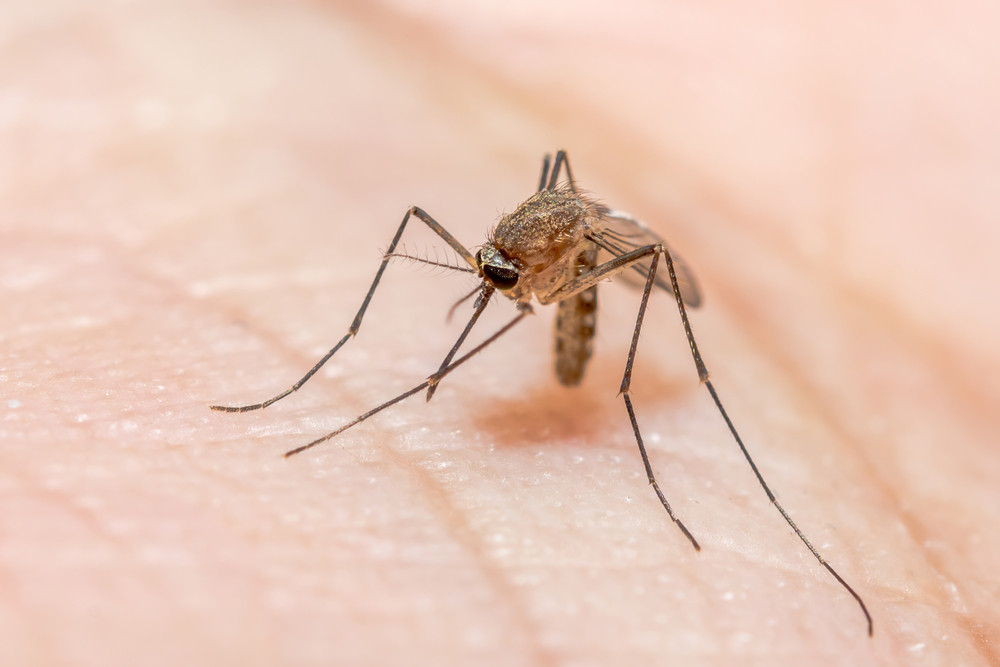Popular Reads
Top Results
Can't find what you're looking for?
View all search resultsPopular Reads
Top Results
Can't find what you're looking for?
View all search results[Commentary] Indonesia’s constant battle against malaria amid pandemic
Health Ministry data in April revealed an upward trend of malaria incidences in Indonesia and an increasing number of high malaria endemicity areas.
Change text size
Gift Premium Articles
to Anyone
T
ransmission of COVID-19 in Indonesia has continued unabated and expanded to malaria-endemic areas, especially the country’s eastern provinces, such as East Nusa Tenggara (NTT), Maluku and Papua, forcing authorities there to step up vigilance to prevent a double burden of disease. Plasmodium – a parasite that causes malaria in humans – can damage the immune system, which is why malaria patients are prone to other infections, including COVID-19.
Health Ministry data in April revealed an upward trend of malaria incidences in Indonesia and an increasing number of high malaria endemicity areas. It will take more time and effort to combat the vector-borne disease because the ongoing coronavirus pandemic has laid a heavy burden on the healthcare system. With all attention and resources centered on COVID-19, the question is: Can Indonesia succeed in achieving its malaria elimination goal by 2030?
There was a significant decrease in malaria cases from 2010 to 2014, according to Annual Parasite Incidence (API) data. But from 2014 to 2019, the control gains seemed to stagnate. Progress toward malaria control targets has stalled in some provinces, such as Papua, where a rise in the number of incidences has been reported.
According to API data, malaria cases are still concentrated in eastern Indonesia, with Papua, West Papua and East Nusa Tenggara being the hotbeds of malaria transmission. An estimated 250,644 malaria cases occurred in Indonesia, 86 percent of them in Papua. Another area with a relatively high malaria endemicity level is North Kalimantan, particularly in North Penajam Paser.
The high malaria endemicity level in some areas is a cause for concern particularly because there is no end in sight for the COVID-19 crisis. Currently, about 4 percent or 23 regencies and cities in Indonesia are still categorized as high-endemicity areas, which means around 1.1 percent or 2.9 million Indonesian people are living in areas with high malaria infection potential.
The Health Ministry’s director of vector borne and zoonotic disease prevention and control, Didik Budijanto, admitted that COVID-19 posed a huge challenge on the malaria control and prevention program. He said this could be the case because many health workers feared they would contract COVID-19 if they carried on with their field work. Similarly, the general public are reluctant to seek out health services for the same reason.
“Malaria can be a comorbid or coinfection from COVID-19. A person will become seriously ill if they suffer from malaria and are simultaneously infected with COVID-19,” Didik told The Jakarta Post in an email interview on Friday.
To address the challenge, the government has provided guidelines, protocols and regulation of new normal adaptation to ensure malaria tracing and treatment continue while at the same time continuing its efforts to prevent the spread of COVID-19.
In this time of pandemic, Didik said, innovation was needed to ensure malaria control activities, such as distribution of long-lasting insecticidal nets, epidemiological investigations and vector control, could continue with COVID-19 safety measures still in check.
Echoing Didik, Asia-Pacific Malaria Elimination Network (APMEN) senior director Amita Chebbi said COVID-19 had resulted in significant disruptions to national malaria programs’ ability to deliver services effectively to communities in need.
Insecticide-treated bed nets are an important tool in malaria control. But, Chebbi said, movement restrictions placed by authorities to curb the spread of COVID-19 had in fact affected the mass distribution of long-lasting insecticide bed nets, leaving the majority of at-risk communities unprotected from mosquito bites and increased transmission.
Early and ongoing border restrictions between countries had resulted in disruptions to supply chains and raw material shortages, which later affected access to drugs and diagnostic tests for malaria, the APMEN leader said.
“Finally, the absence of clear information about COVID-19 has created panic among communities, affecting service delivery by frontline health workers who face stigma when reaching these populations at risk,” Chebbi told the Post.
With just only one decade left for the Asia-Pacific to achieve its malaria elimination goal, countries may need to take “unprecedented” measures to ensure malaria services such as case finding and disease treatment can continue running. As malaria spreads beyond borders, eliminating malaria clearly needs national, regional and global commitments.
The government has set a target for 405 regencies and cities to achieve their malaria elimination goal by 2024; hence, the 2020-2024 period is a crucial and determining phase in its efforts to achieve a malaria-free Indonesia by 2030, according to the Health Ministry.
To ensure its success in achieving the malaria elimination target by 2030, the government set regional and sub-regional targets, with the aim of freeing regencies and cities from malaria gradually.
“It will start from the regency and/or city level before we later move to the provincial level and the regional scope,” said Didik, adding that this effort was based on similarities of the endemicity status in each region. The malaria-free campaign will start with the Java-Bali region, followed by Sumatra-Sulawesi, Kalimantan-West Nusa Tenggara-Maluku-North Maluku, Papua-West Papua and NTT.
Currently, 306 regencies and cities across Indonesia are malaria-free, which means 86 percent of the country’s population live in areas free from the vector-borne disease. But there is still a long way to go before malaria can be eliminated from the country, especially due to the challenges the pandemic has brought.
Overwhelmed healthcare systems resulting from the pandemic have also reminded us of the importance of community involvement for disease control and response. Communities should play a more active role in the delivery of healthcare services, including interventions to curb malaria transmission in hard-to-reach populations. After all, the community is the backbone of the nation’s fight against malaria.
----
Staff writer at The Jakarta Post










